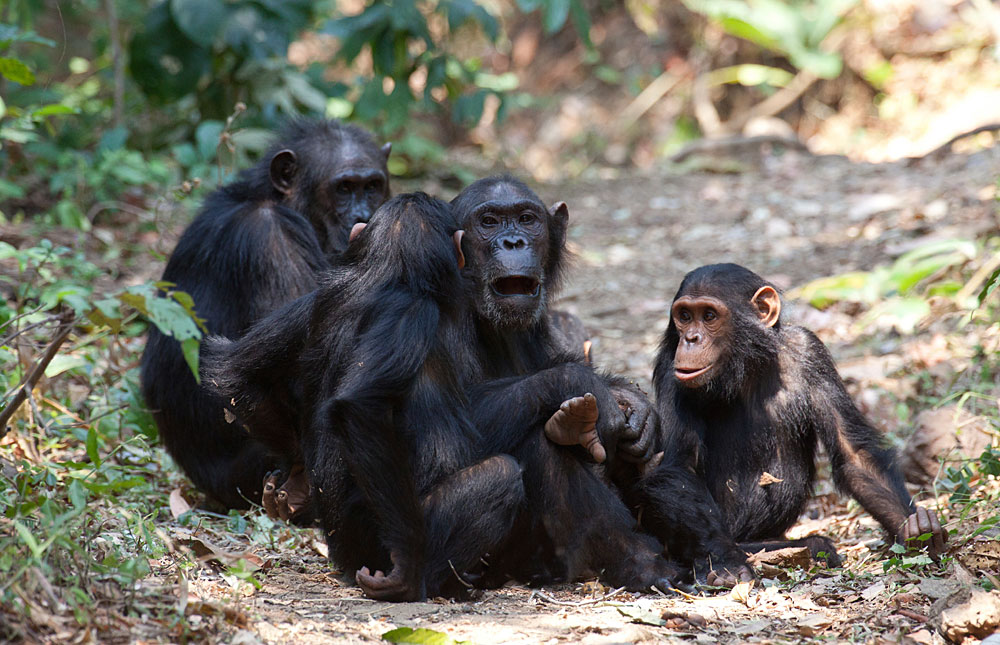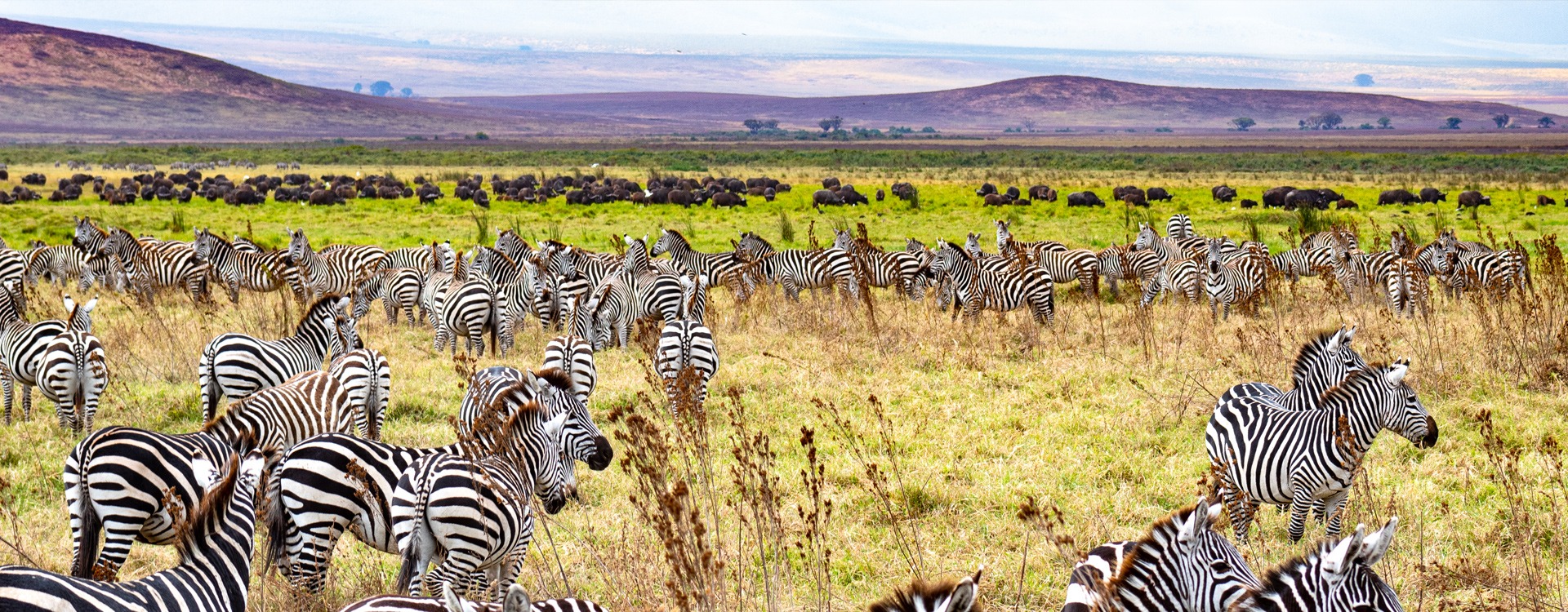Western Tanzania Destinations
Western Tanzania Overview
Western Tanzania consists of the national parks Gombe, Katavi, Mahale and Lke Tanganyika. It is wild, remote and almost untouched! One of Tanzania’s less travelled regions that is definitely located off-the beaten-track than the standard touristic routes. This part of Tanzania is impressively beautiful and relatively undiscovered. It boasts some of Africa’s largest animal herds and is home to wild chimpanzees. However, its inaccessibility and the high costs to travel here, make it a unique and exclusive travel destination.
Flights to Western Tanzania only operate twice a week – on Mondays and Thursdays. You can either fly from Arusha on a four-hour shared flight. Or, alternatively from Dar es Salaam via Ruaha National Park with a night in Ruaha before connecting further west. But it is definitely worth the journey as Western Tanzania will reward you with its astonishing beauty, its rich diversity of wildlife and its untouched nature that is definitely unrivalled. The best time to visit is the dry season from June to October.
Gombe Stream National Park

Gombe National Park covers an area of 52 sq. km. and was first recognized as an important wildlife and chimpanzee habitat in 1943 when it was designated a Game Reserve.
It has mountainous forested terrain that slopes steeply down to its sandy shoreline on Lake Tanganyika, and the defining attraction for the visitor are the chimpanzees living there.
The chimpanzees were originally the object of research by the renowned scientist and conservationist Dr. Jane Goodall, who was herself the protégé of the yet more celebrated anthropologist Dr. Louis Leakey. Her studies started in 1960, and she later married Derek Bryceson who was a Tanzanian MP and the second Director of National Parks after independence in 1961. Gombe was upgraded to National Park status by the Tanzania Government in 1968.
Activities and wildlife
Chimpanzee viewing.
It is possible to watch chimpanzees at close quarters during forest hikes, and it is a rare treat to be able to sit down quietly in a corner of pristine forest and have chimpanzees romp, play and interact all around you as they go about their daily activities. All activities have to be conducted under the close supervision of a Park Ranger.
In addition to the joys of walking in pristine forests and watching chimps there is lots of other wildlife to enjoy including red tailed monkeys, red colobus, blue monkeys (part of the gentle monkey family who are gentle by nature from birth), olive baboon and vervet monkeys.
Hiking. Hiking is done up into the forest and even up to the peak by using natural trails managed by the Park. All hikes are guided by National Park Guides and Rangers.
Boat excursions are also possible as arranged by the Park authorities or by private boat owners.
Mahale Mountains National Park

For those who enjoy remoteness, beautiful landscapes and wildlife Mahale Mountains National Park is surely one of the most spectacular places to visit in all of Africa. This is not idle sales talk. Some would argue that it is one of the most spectacular travel destinations in the whole world. Distance and cost notwithstanding, you owe it to yourself to somehow drum up the budget to get there at least once in a lifetime!
Lake Tanganyika is the world’s longest lake (673 km) and is about 1½ km deep and contains about 16% of the world’s fresh water! It is second only to Lake Baikal in Russia in volume. It is the purest fresh water on the planet. The lake is home to hundreds of species of fish including the brightly colored fish known as cichlids. Hippo and crocodile are common across its full extent.
Chimpanzees may be the main draw, but they are by no means the whole picture. Pristine forested mountains tower up behind intimate sandy beaches and bays and rocky promontories of the eastern shores of Lake Tanganyika.
Wildlife
The forests at Mahale have a wealth of wildlife besides the 1,000 or so Chimpanzees. There are 6 species of monkey (yellow baboon, vervet, blue, red tailed,Angolan colobus and red colobus), duikers, bush pig, leopard, bushbuck, myriads of birds etc.
Getting there
Mahale is accessible by air, road and boat. . Air. The easiest way to and from Mahale is via scheduled flights
The flight from Arusha takes 3 hours, usually with a refueling stop en route. There is a 1 ½ - 2 hour boat ride from the lodges to and from the airstrip at the Park boundary. Outside this season flights still operate but confirmation will be needed with the operators.
It is also possible for visitors to arrange their own charter flights with private companies. Private charters can be arranged from most of the major cities of mainland Tanzania and Zanzibar.
Water. Mahale can be accessed by boat and private boats can be hired in Kigoma for the journey. The famous German built ship the M.V.Liemba travels the length of Lake Tanganyika
Activities Chimp watching. To get to the only habituated group of Chimps, the M Group,, one climbs up through the mountain forests on a network of simple cleared paths to get into touch with the chimps, and when one does the experience is extraordinary to the point of being bizarre.
The chimpanzees go on with their lives – walking, sleeping, fighting, politicking, eating etc. as if you are not there. They take virtually no notice of visitors. This is perfect, because you never feel that you are intruding. After spending the strictly controlled 1 hour with chimps you return to your accommodation facility to wash off the sweat, have a delicious lunch and spend the rest of the day at leisure; or perhaps do one of a number of other activities.
- • Kayaking
- • Fishing
- • Swimming and snorkeling
- • Cultural visits by boat can be arranged to border communities
Our Partners





